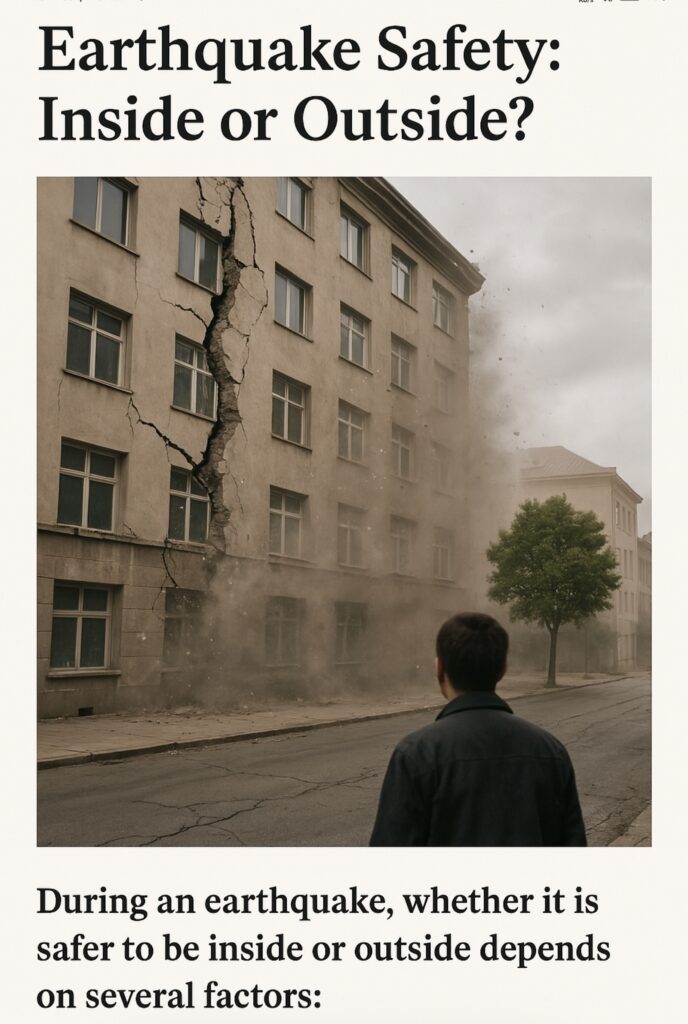Earthquakes strike without warning, shaking the ground beneath our feet and triggering panic. In such a moment, a crucial question arises: Is it safer to stay inside a building or rush outside? Understanding earthquake safety can mean the difference between life and death. Let’s break it down.
Staying Inside: The Right Approach
If you are indoors when an earthquake occurs, experts strongly advise against running outside. Here’s why:
- Falling Debris Hazard – The most common earthquake-related injuries result from falling glass, furniture, and debris. Running outside exposes you to these dangers.
- Structural Integrity – Modern buildings constructed to seismic standards are designed to withstand quakes. Staying inside and following proper safety measures can be safer than attempting to escape.
- The “Drop, Cover, and Hold On” Technique – If you are indoors, immediately drop to the ground, take cover under sturdy furniture, and hold on. Avoid windows, mirrors, and heavy objects that might fall.
- Avoid Doorways – A common myth suggests standing in a doorway is the safest option, but in reality, doorways do not provide adequate protection.
Being Outside: Safe or Risky?
If you are already outdoors when the shaking starts, stay outside—but be mindful of your surroundings.
- Stay Away from Buildings – Facades, glass windows, and balconies can collapse, making the area around buildings extremely dangerous.
- Avoid Trees, Power Lines, and Streetlights – These can topple during strong shaking, posing a serious threat.
- Seek Open Spaces – Parks or large open fields offer the safest refuge, away from falling debris.
Can the Ground Open Up and Swallow You?
Hollywood loves to depict massive chasms opening up and swallowing people whole during earthquakes. The reality, however, is far less dramatic:
- Ground Fissures Do Happen, but they are rarely large enough to engulf a person.
- Liquefaction Can Occur – In areas with water-saturated soil, the ground can behave like a liquid, creating small sinkholes or making buildings sink.
- Landslides Are a Real Threat – In mountainous or hilly regions, earthquakes can trigger landslides that pose significant dangers.
Final Verdict: Where Should You Be?
- Indoors? Stay put, drop, cover, and hold on if the building is structurally sound.
- Outdoors? Move to an open space away from buildings, trees, and power lines.
- Driving? Pull over in a safe location, away from overpasses and bridges, and stay inside the vehicle until the shaking stops.
Preparedness is key. Knowing what to do before, during, and after an earthquake can significantly reduce risks. Stay informed, stay prepared, and most importantly—stay safe!

